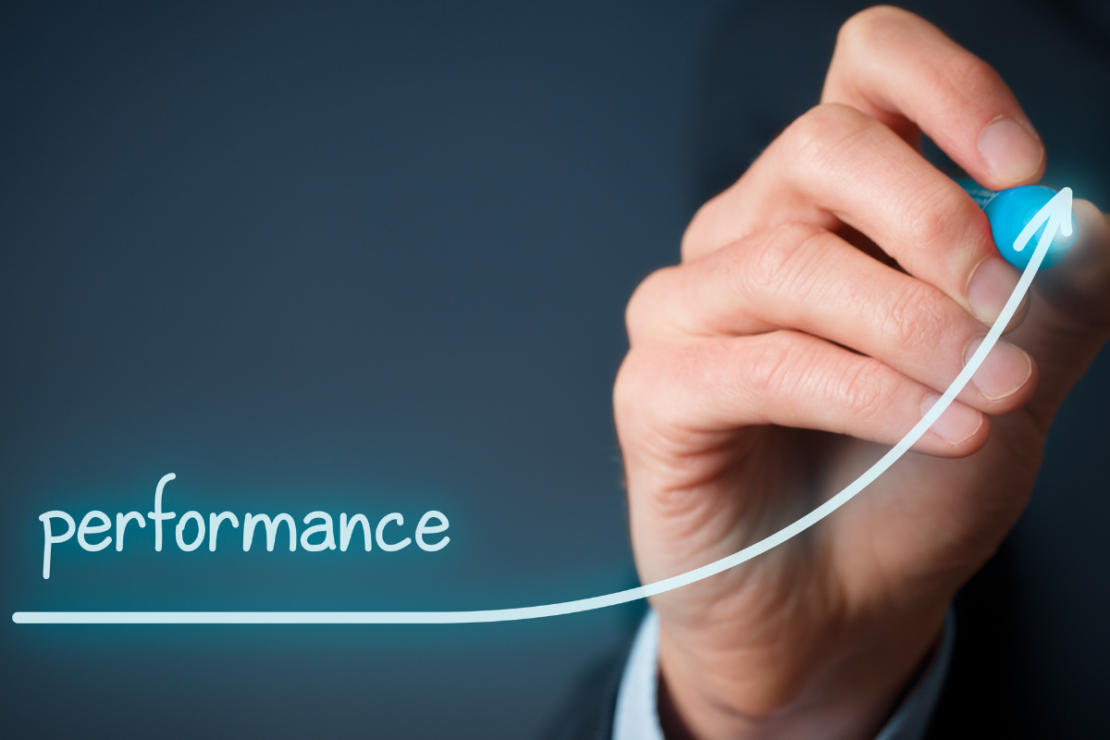
Last month, we invited Sri Chellappa, president of Engagedly, to talk about mentoring’s role in employee engagement and the mistakes companies make when trying to boost engagement.
We had such a good response to those articles that we’ve invited him back to talk about another important topic: performance management.
Below is our Q&A with Sri.
How do you define performance management?-1.png)
Performance management is an ongoing dialogue to help employees perform better and ultimately achieve better organizational outcomes. That’s the performance management process. And it is indeed an ongoing process.
Too often, organizations approach performance management as a way to measure an employee’s performance once a year. That’s not performance management; that’s a performance review. Performance reviews are part of performance management, but the review itself is not performance management.
If your organization truly wants to drive employee performance, a yearly review isn’t going to cut it. You need to think about performance strategically as something you weave into the everyday culture.
How has performance management evolved in the last 20 years?
While many companies still do the once-a-year performance review, most do recognize that an annual review isn’t enough—that it isn’t true performance management. So in our experience, we are finding that there’s better recognition that performance management is not a once-a-year activity.
I think the other big change has to do with the word “performance” itself. Consider “performance” in 1990: you’d work on a specific task given to you by the manager, and the manager knew whether you were performing or not.
Today’s reality: many people work from home or at remote locations, like the local coffee shop. Managers might manage across various locations/branches. People often work with customers, vendors, and team members. People work on a variety of devices, not just paper at their desks. And people might be working on a variety of projects, possibly across different groups/teams. All these things can affect employee performance. In essence, performance has become more continuous and more distributed at the same time.
As a result, many managers don’t have that bird’s eye view of what each employee is doing at any given moment—and whether the employee is performing at peak capacity.
So this changes the discussion dramatically. How’s the manager supposed to understand what each employee is doing and manage better outcomes for the team and across the organization?
In our experience, we believe ongoing feedback, ongoing coaching, and ongoing measures (like real-time goals) are needed to serve this ongoing process—this ongoing dialogue—that is performance.
When should an organization consider performance management software to help with this ongoing process?
Most companies already use some sort of “software” to measure performance, even if it’s simply a spreadsheet or Google doc.
Where it becomes challenging is when an organization becomes a lot bigger—you need robust software to manage the process. For example, if performance visibility is required across divisions, a company could benefit from robust software to manage the process and keep it streamlined.
Software can also maintain consistency and ensure fairness across the organization. So you can avoid one team doing performance management one way and another team doing it another way and the third team might not be doing it at all. So the software provides consistency, fairness, and streamlining.
Plus, the best-in-class software will provide good employee insights, like who are your best performers, what skills do people have, where should you focus in terms of employee promotions, and things like that. You won’t have access to that sort of intel unless you have excellent performance management software.
What makes Engagedly’s performance management software different?
Our software not only helps organizations measure and understand employee performance; it also helps organizations drive better performance by developing employees.
So our software allows you to manage performance—you understand what’s working, who’s performing, who’s underperforming, and so forth. But we also have coaching and learning tools that help employees grow and improve. Plus, we have recognition and reward tools baked into the software so you can recognize employees who do perform well and who consistently improve. We make these tools fun through gamification, which is another benefit our software provides.
Engagedly’s performance management software uses the OKR approach for goal-setting which allows employees to execute individual and organizational goals. With Engagedly’s OKRs and Ongoing Check-ins, it is easier to understand employees’ priorities and assign them to work accordingly.
How do you see employee mentoring and performance management working together?
Mentoring fits within the employee development sphere, which ultimately drives better employee performance. If an employee is mentored through a formal mentoring program, the employee will grow and transform both personally and professionally.
From a professional standpoint, the employee will likely gain a better understanding and appreciation for the organization and its place in it. They’ll likely work on improving certain skills and areas that will help improve their performance on the job. That’s going to ultimately help them be a better performer, better communicator, and better team member. Mentoring is a huge win for performance because it really focuses on elevating the employee to perform better.
Thanks, Sri! Learn more about Engagedly’s approach to performance management here. And, of course, keep in mind that mentoring is a great way to enhance employee engagement across all three areas: with the organization, the manager, and the job.